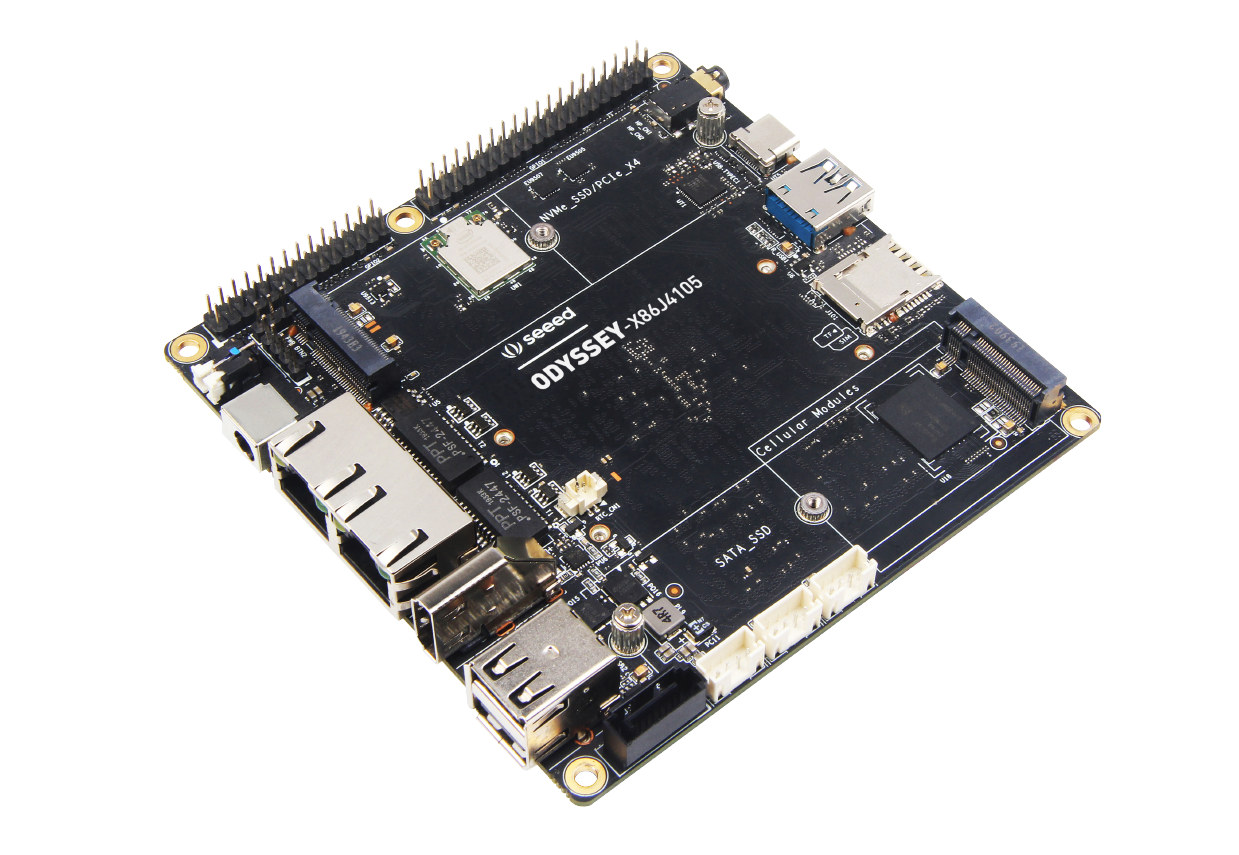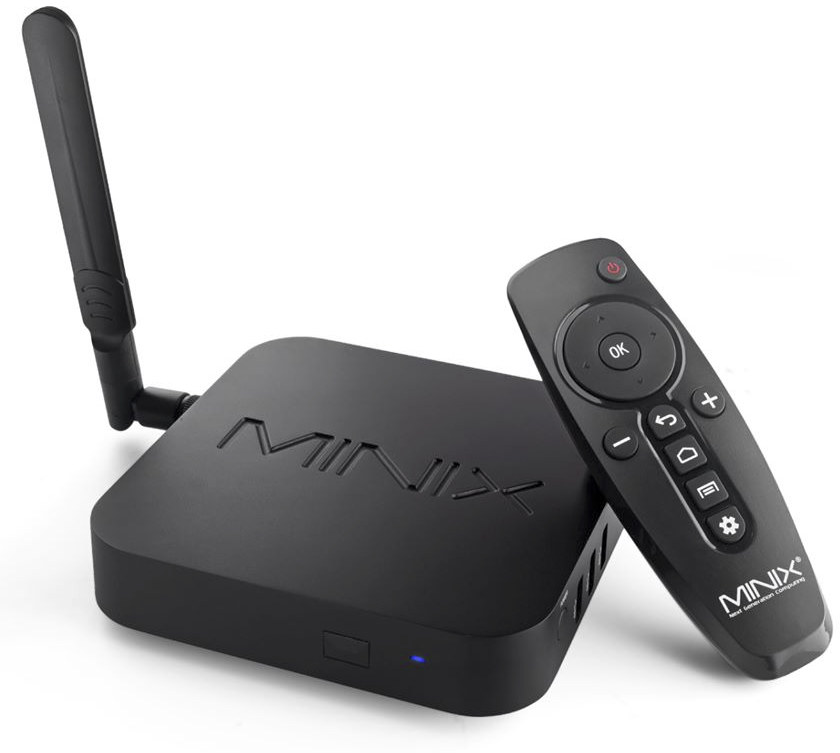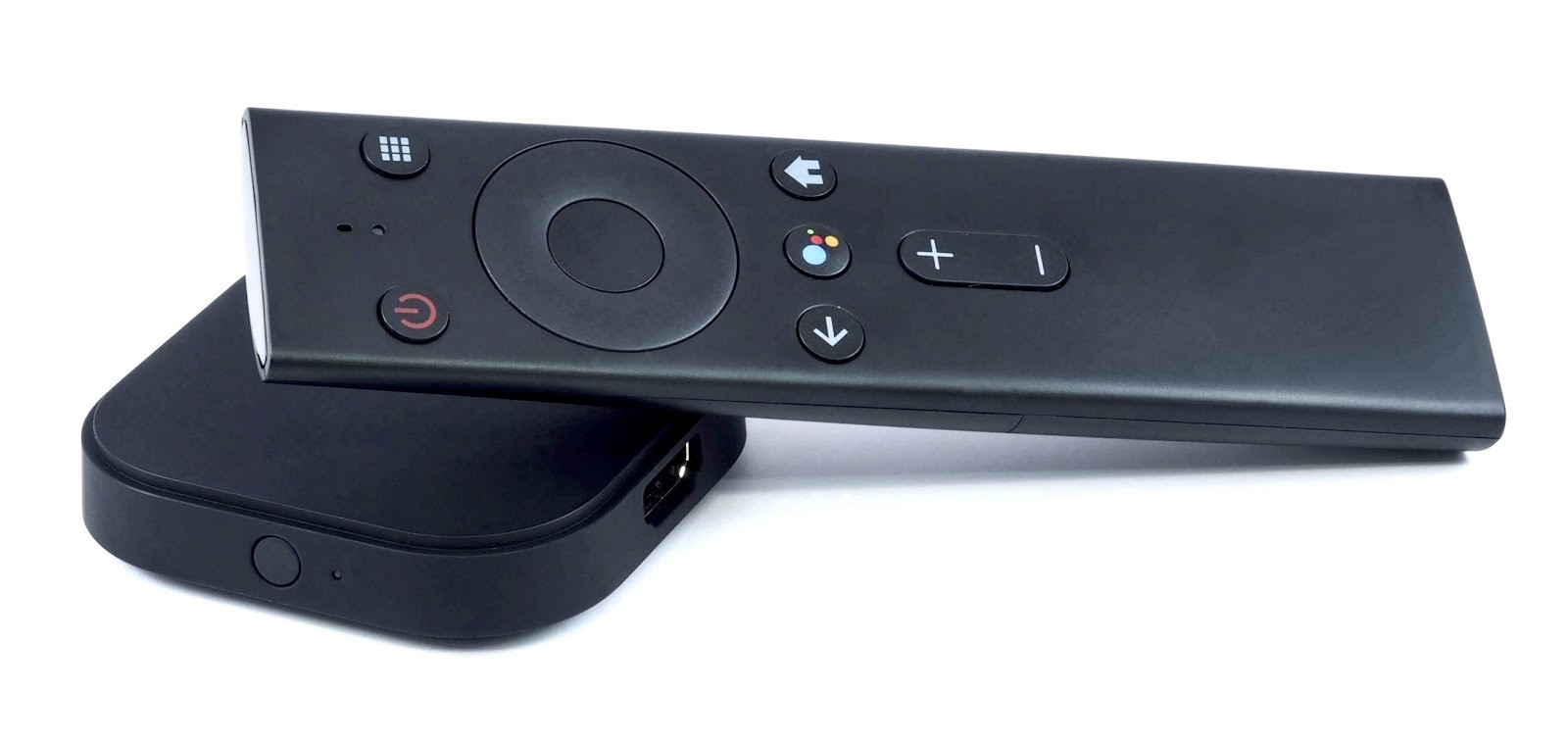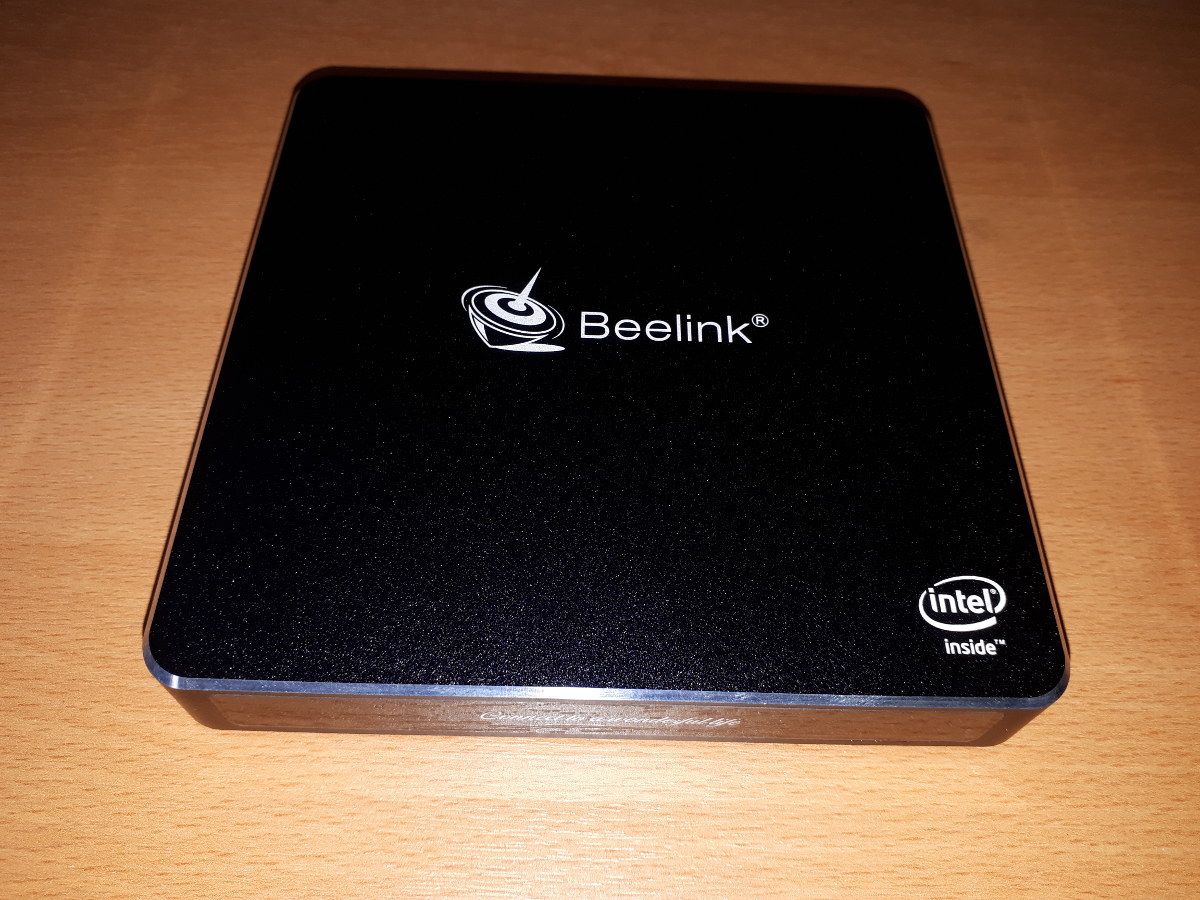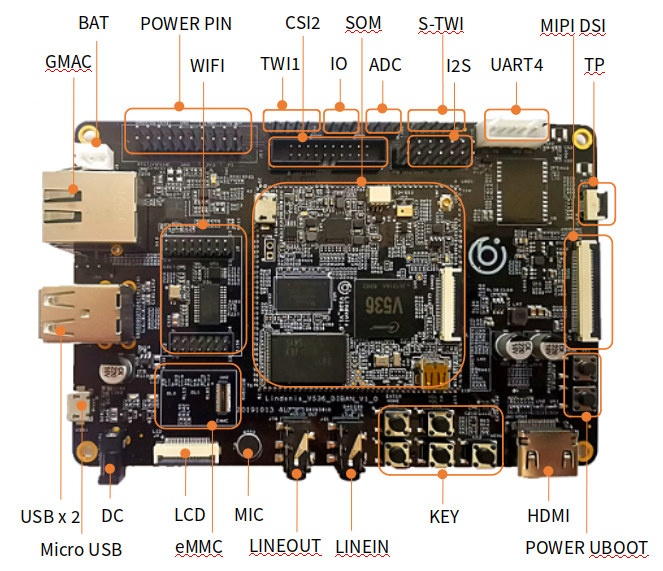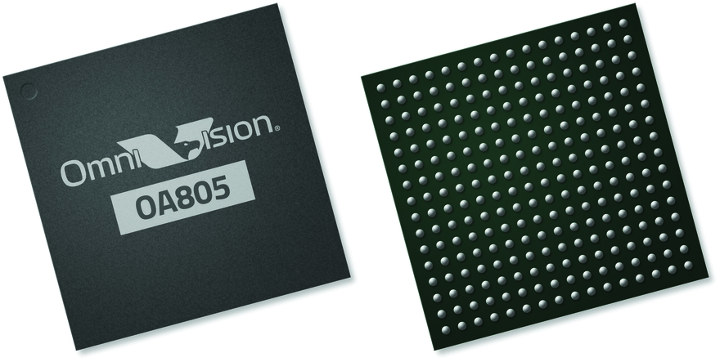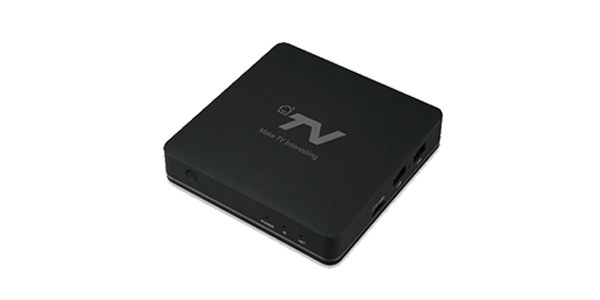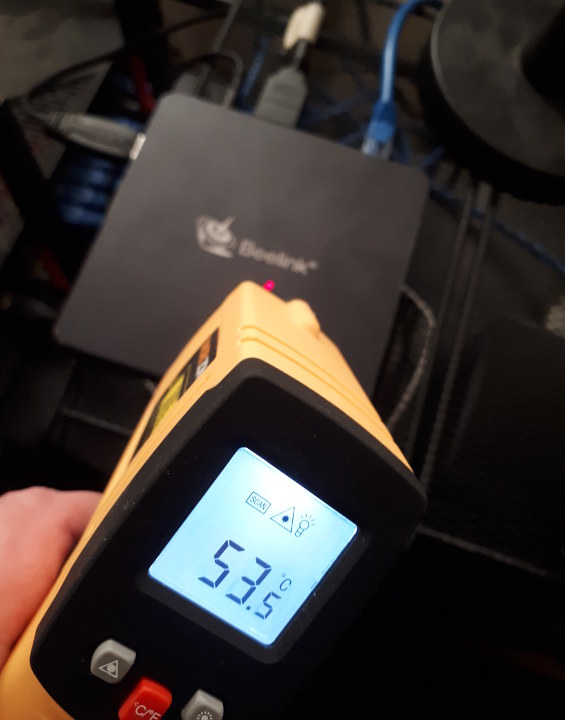Would it be good to have an all-in-one Windows platform used to both develop Arduino code and run that code to control I/O of your project? Or alternatively, have a single board computer capable of video processing and real-time I/Os? That platform already exists. UDOO X86 II SBC features an Intel Braswell processor combined with an Arduino Leonardo compatible Microchip ATmega32U4 MCU. But there’s now another, more powerful option courtesy of Seeed Studio with the oddly named ODYSSEY-X86J4105800 SBC equipped with an Intel Celeron J4105 quad-core Gemini Lake processor to run Windows 10 or Linux distributions, and a Microchip SAMD21 ARM Cortex-M0+ microcontroller compatible with Arduino Zero. ODYSSEY-X86J4105800 SBC specifications: SoC – Intel Celeron J4105 quad-core processor @ 1.5/2.5 GHz (Turbo) with 12EU Intel UHD Graphics 600 @ 250-750 MHz; 10W TDP System Memory – 8GB LPDDR4 RAM Storage Optional 64GB eMMC flash (fitted to ODYSSEY-X86J4105864 model), 1x SATA III data […]
MINIX NEO U22-XJ Media Hub with Dolby Vision & Audio Support Launched for $170
MINIX NEO U22-XJ Android 9.0 media hub was first unveiled at IFA 2019 last September. It is the first TV box that I know of equipped with Amlogic S922XJ processor that adds Dolby Vision and Dolby Audio licenses to the more common Amlogic S922X processor. The company has now announced the device will launch on Monday, March 2nd 2020 but without providing any price information. As usual, we know need to wait until the official launch date to find out as MINIX NEO U22-XJ can already be purchased on “MINIX Official Store” in Aliexpress for $169.90 including shipping. MINIX NEO U22-XJ main specifications haven’t changed since the initial announcement, but we do have a few more details:: SoC – Amlogic S922XJ hexa-core processor with four Arm Cortex-A73 cores, two Arm Cortex-A53 cores, Arm Mali-G52MP4 GPU System Memory – 4GB DDR4 Storage – 32GB eMMC 5.1 flash, microSD card slot Video […]
Google ADT-3 Developer Kit is Now Available for Purchase for $79
Google released Android TV on Android 10 last month while announcing the Google ADT-3 developer kit to help developers make sure their TV apps are ready for the latest version of the operating system. The developer kit, that’s basically a TV box, was not available at the time, and we had limited information, but Google ADT-3 can now be purchased for $79 on Askey, an ASUS Computers subsidiary. We also know the full specifications for Google ADT-3: SoC – Amlogic S905Y2 quad-core Arm Cortex-A53 processor @ 1.8 GHz with an Arm Mali-G31 MP2 GPU System Memory – 2GB RAM Storage – 8GB eMMC flash Video Output – HDMI 2.1 port up to 4K Ultra HD resolution @ 60 Hz Connectivity – 802.11ac (2.4GHz / 5GHz) 2T2R WiFi 5 and Bluetooth 4.2 classic+LE USB – 1x Micro USB port Misc – Bluetooth Pairing / Recovery Button, red/green status indicator Power Supply […]
Beelink Gemini T45 Pentium N4200 Mini PC Review
No sooner had I written ‘Beelink T45 Review with Windows and Linux, and Tweaking BIOS Power Limits’ than Beelink announce they wouldn’t in fact sell that configuration but an ‘updated’ version. And it is significantly different because this new version is now actively cooled and uses an Apollo Lake N4200 processor. It also still has the same name: the Beelink Gemini T45. I’ve now reviewed this new version and you may experience déjà vu on reading the following as in keeping with Beelink’s philosophy I’ve basically reused the same text as before and just updated where appropriate. Beelink have further extended their ‘Gemini’ range of mini PCs by adding the T45. This is an actively cooled mini PC that uses the slightly older Apollo Lake Intel Pentium N4200 CPU which is a quad-core 4-thread 1.10 GHz processor boosting to 2.50 GHz with Intel’s HD Graphics 505. The T45 is a […]
Lindenis V536 SoM & SBC Targets 4K Camera Applications
Back in summer 2018, we wrote about Lindenis V5 single board computer based on Allwinner V5 quad-core Cortex-A7 processor with two MIPI CSI connectors and designed for 4K cameras. Allwinner has now come up with a new 4K camera processor very similar to V5, since Allwinner V566 comes with two Cortex-A7 cores, and a single MIPI CSI interface, and Lindenis designed a new SBC based on the new processor using a SoM + baseboard design instead. Lindenis V536 specifications: SoM SoC – Allwinner V536 dual-core Cortex-A7 processor @ 1.2 GHz; 4K H.265/H.264 video encoding & decoding @ 30 fps; 28nm process System Memory – 1GB DDR3 Storage – SPI NOR flash or SPI NAND flash, bootable MicroSD card Video Output – Micro HDMI 1.4 port Video Input – MIPI CSI connector Audio – Digital microphone Connectivity – 802.11b/g/n/ac Wi-Fi 5 & Bluetooth 4.2 via AP6255 Baseboard Interface – Castellated holes […]
OmniVision OA805 4K Video Camera SoC Supports 100 ms Boot Time, 4K HEVC Encoding
OmniVision OA805 Arm Cortex-A5 4K video camera processor is specifically designed for battery operated security and surveillance cameras, including video doorbells, with the ability to encode 4K30p video streams with HEVC/H.265 video codec at very low power consumption. The processor also has a very short boot-up time of just 100ms, meaning it can go from completely powered off to fully functional upon trigger by a motion detection sensor. That short boot time removes the need for standby or sleep mode further lowering the power consumption and allowing the camera to have up to two years of battery life (albeit no mention of battery capacity was made…). OmniVision OA805 specifications: CPU Main CPU – Arm Cortex-A5 processor with NEON, 32KB I-cache, 32KB D-cache Secondary CPU (SPU) – Arm Cortex-A5 processor with NEON, 32KB I-cache, 32KB D-cache Media Processing Unit (MPU) – 32-bit RISC MCU with 8KB I-cache, 8KB D-cache System Memory […]
SDMC DV8919 Amlogic S905X4 Android TV 10 TV Box Supports AV1 Decoding
We’ve previously covered several TV box & set-top box SoCs with support for the royalty-free AV1 video codec including Broadcom BCM7218X SoC, and Amlogic S805X2, S905X4, and S908X processors. But so far, apart from an AV1 demo on the RTD1311/RTD1319 development board (Pymparticle EVB?), and new about Technicolor Jade STB, I had not really seen AV1-capable TV boxes so far. SDMC DV8919 appears to be the first Amlogic S905X4 TV box on the market and one of the first running the recently released Android 10 on Android TV OS. SDMC DV8919 specifications: SoC – Amlogic S905X4 quad-core Arm Cortex-A55 processor @ up to 2.0 GHz with Arm Mali-G31MP2 supporting OpenGL ES3.2, Vulkan 1.1 and OpenCL 2.0 System Memory – 2GB DDR memory (options: 1GB or 4GB) Storage – 8GB eMMC flash (options: 16GB, 32GB, 64GB), MicroSD card slot Video Output – HDMI 2.1 up to 4K @ 60+Hz with CEC […]
Beelink T45 Review with Windows and Linux, and Tweaking BIOS Power Limits
[Update December 23, 2019: We’ve been informed by Beelink that the T45 has been updated to the 6W Celeron N4200 processor instead, and the system is now cooled with a fan. The model reviewed in this post is the fanless version with a 10W Intel J4250 processor, which was never sold] [Update January 30, 2020: We’ve now posted a review of the new model at Beelink Gemini T45 Pentium N4200 Mini PC Review] Beelink have further extended their ‘Gemini’ range of mini PCs by adding the T45. This is a passively cooled mini PC that is effectively a companion to the J45 as it again uses the slightly older Apollo Lake Intel Pentium J4205 CPU which is a quad-core 4-thread 1.50 GHz processor boosting to 2.60 GHz with Intel’s HD Graphics 505. Although the T45 is a ‘NUC’ style mini PC physically consisting of a 119 x 119 x 17.7 […]


